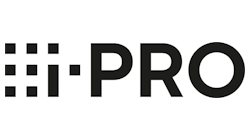Following last year’s spin-off from the parent company, Panasonic i-PRO Sensing Solutions announced on Tuesday that it will be changing its global brand to i-PRO.
According to Bill Brennan, President of Panasonic i-PRO Sensing Solutions Corporation of America (PIPSA), the new branding is not simply a marketing change for the company but rather is reflective of a shift in how it operates and approaches the market. For example, Panasonic historically has been more heavily focused on large, project-based video surveillance deployments than on small and medium-sized businesses. However, with the flexibility they enjoy as a result of the spin-off, they are now launching solutions to address the needs of the mid-market.
“Under Panasonic, we were held to very tough inventory because we were a smaller piece of a much larger organization, an organization that really didn’t have the same business model as security,” Brennan told members of the media during a virtual press conference announcing the move. “So, we struggled a lot in terms of our product availability. It was a struggle and we understand the security business. The security business is a lot like the construction business, we owe it to our integrators to ensure we meet the demands of their projects.”
“The significant difference between Panasonic and the new i-PRO is we are flexible and much faster than Panasonic time,” said Masami Eguchi, Executive Vice President at PIPSA.
The new company is comprised of the three different business units in the U.S. The Professional Security Surveillance unit provides IP and analog video surveillance, access control and analytics solutions for commercial security applications. The Public Safety business offers video solutions for law enforcement, such as body worn cameras, in-vehicle video systems, evidence capture and management software, and intelligent analytics. Lastly, the Medical Imaging business provides high-performance cameras tailored specifically for medical imaging devices and systems as well as other industrial applications.
“Panasonic was a very siloed company, but we are going to break down the wall between Public Safety and Video Surveillance,” Brennan continued. “Our mission – and what we are already planning and moving towards – is city-wide surveillance, body-worn and in-car on one platform. It’s a dramatic and incredible opportunity. We also want to be proactive versus reactive, so we are looking at various ways that we can prevent things from happening as opposed to utilizing video as evidence capture after something has occurred.”
Vertical Market Focus
As part of the company’s newfound flexibility, Brennan said that it would also be targeting several verticals that they had not had a large presence in before, namely education and mid-sized municipalities.
“We are very much focused on education and what we found is not only do we offer the education market incredible benefits from a technology standpoint but we also understand the market in terms of how they acquire products and what they need to budget products long term,” he explained. “Many of the benefits to K-12 relate also to midsize municipalities. We’re not looking to go after the grandiose (city projects). We have a third-party partner that does a fantastic job in the major cities, but we focus primarily on the secondary markets, like a Grand Rapids-sized city.”
Future Plans
Brennan said that the company would also be launching new hardware and software solutions later this year for both on-premises and cloud applications.
“Our goal is to establish a new brand, a brand that is extremely nimble, addresses the needs of the market and listens to our customers,” added Brennan. “Under the new company in the United States, not only do we have sales, but we have research and development, so our attachment to the organization in Japan is very solid and we’ve broken down a lot of the walls that existed during our time as Panasonic.”
And though the company has already heavily invested in the development things, such as intelligent analytics and facial recognition technology, Brennan said new partnerships and/or acquisitions are not out the question.
“Polaris often asks us if have anything in mind. As I mentioned to you, one of our strategies in terms of being proactive versus reactive, we are working with third-party companies in order to do that and they could ultimately result in acquisition down the road,” he said. “We’re really doing this very methodically, entering into kind of a white label arrangement and moving that into a potential acquisition but our organization is open to acquisitions when it makes sense.”
Joel Griffin is the Editor of SecurityInfoWatch.com and a veteran security journalist. You can reach him at [email protected].




